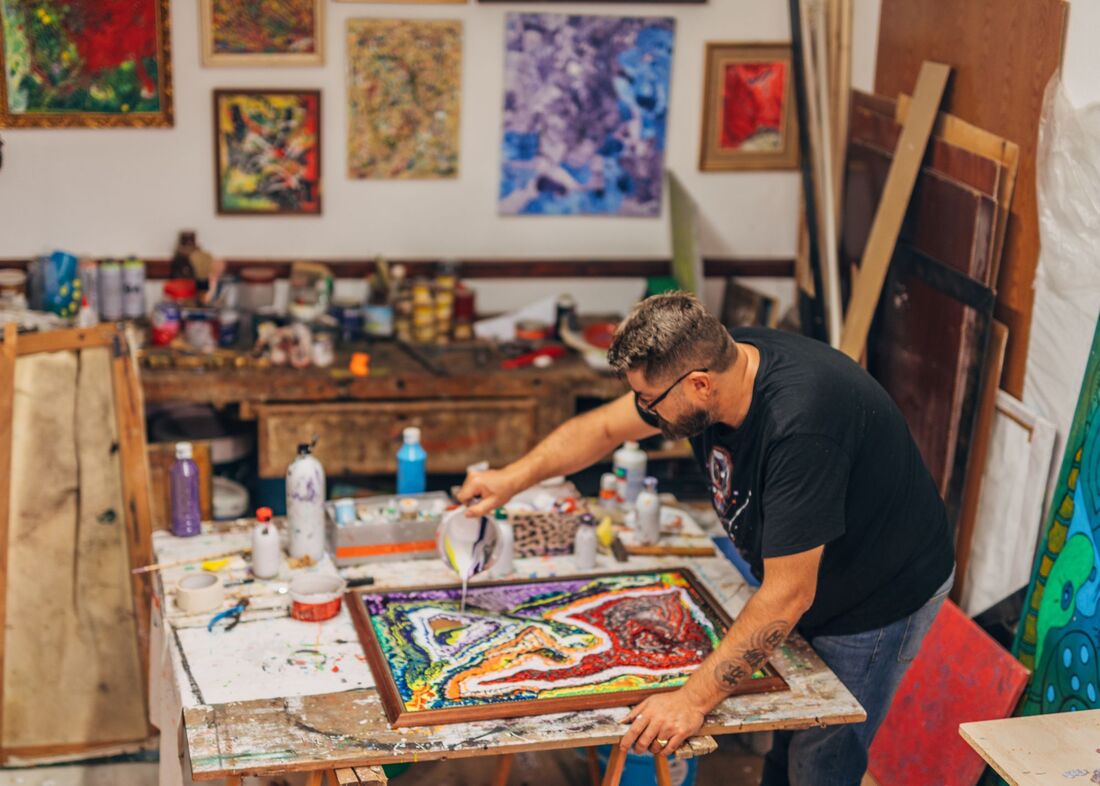Artful Academia
The musings of a landscape painter, art teacher, and art history lover
|
I entered graduate school at the University of Delaware in the fall of 1996 with a passion for painting. I was excited to learn from experienced artists and to create new work in a supportive environment. However, my experience in graduate school was not what I expected. The competitive nature of the program, the pressure to produce conceptual artwork, and the lack of personal time took a toll on my creativity and wellbeing. The Early DaysThe first few weeks of graduate school were amazing. I was surrounded by talented artists who shared my passion for painting. We worked hard, but we also had a lot of fun. We would often stay late in the studio, talking about art and life. I felt like I was finally where I belonged. The First CritiqueEverything changed after our first critique. We gathered in one of the classroom studios and put our work up on the walls. The instructors were there, and we began to discuss. It quickly became apparent that the students were trying hard to prove how much they knew about art as well as to show off their art-speak words. The art-speak was laid on thick, and it made my head swim. What's more, I could tell that I was behind. Most of the artists the students referred to were completely unknown to me. I didn't know whether I was trying to be campy or postmodern, or whatever. The Pressure To ProduceThe pressure to produce high-quality work was intense. We were expected to create new paintings every week, and we were constantly being critiqued by our peers and instructors. I started to feel like I was never good enough. I would spend hours agonizing over every brushstroke, and I would often be so stressed that I couldn't sleep. The Lack of Personal Time In addition to the pressure to produce, I also had very little personal time. I was either in class, in the studio, or studying. I didn't have time to see my friends or family, and I started to feel isolated and alone. Fighting Against the Times One of my main struggles was with the trends of the art world and how they seemed to be in complete opposition of my own experiences and creative desires. During the late 1990’s artists were making “bad” paintings and leaning into kitsch. The artworld was excited to make fun of itself and not try to make anything too serious or, God forbid, sentimental or true. It was all about irony. I have always loved painting traditional landscapes, still lives, and working with an emphasis on realism. In graduate school, it was made clear to me that actual technical skills and an effort towards heartful creativity was anathema. I had to shift my thinking in order to make art that fit in with the zeitgeist. The Impact on My Creativity and Wellbeing The stress of graduate school took a toll on my creativity. I started to doubt my abilities, and I lost my passion for painting. I would often stare at a blank canvas for hours, unable to find inspiration. I felt like I was in a creative rut, and I didn't know how to get out. The stress of graduate school also took a toll on my wellbeing. I started to experience anxiety and depression. I would have trouble sleeping, and I would often have panic attacks. I felt like I was drowning, and I didn't know how to save myself. The End of My Graduate School Journey  I did finish graduate school on a positive note. I began creating a series of small abstract paintings, giving myself the freedom to paint however I chose on each panel, regardless of consistency or theory. I completed hundreds of those small paintings and hung them in multiple grid groups for the thesis show. The work was well received and accepted m MFA proudly. It took me awhile to get graduate school out of my head and get back to making work that was true to myself, but I have stuck with it and continue to paint. My experience in graduate school was a challenging one. It was stressful, isolating, and it negatively impacted my creativity and wellbeing. However, I'm grateful for the lessons I learned. I learned that it's important to take care of myself, both physically and mentally. In hindsight, I also learned to trust my own creative instincts and make the artwork that I want. I truly enjoyed my professors and certainly learned a lot about contemporary art. How to Maintain Balance and Mental Health in CollegeCollege can be a challenging time for many students. The transition to living away from home, the pressure to succeed academically, and the social demands of college life can all take a toll on your mental health. If you are struggling to maintain balance and mental health, here are some tips that may help:
Remember, you are not alone. Many college students struggle with mental health issues. If you are struggling, please reach out for help. There are people who care about you and want to help you succeed. Need more inspiration: Here is an inspiring article on how the Impressionists overcame their creative obstacles and you can too!
0 Comments
Your comment will be posted after it is approved.
Leave a Reply. |
Author: Bruce BlackWelcome to Artful Academia: Categories
All
Archives
May 2024
|
|
Follow us on Social Media
|
|
|